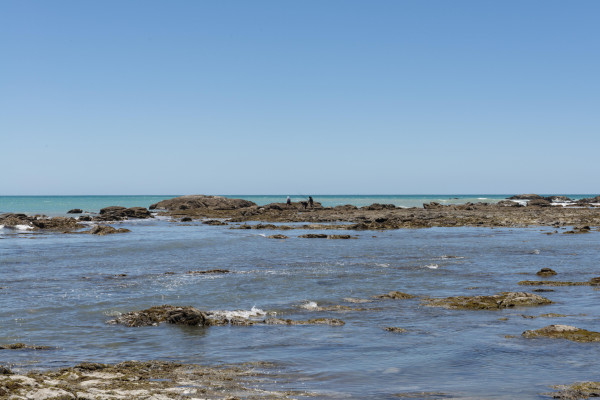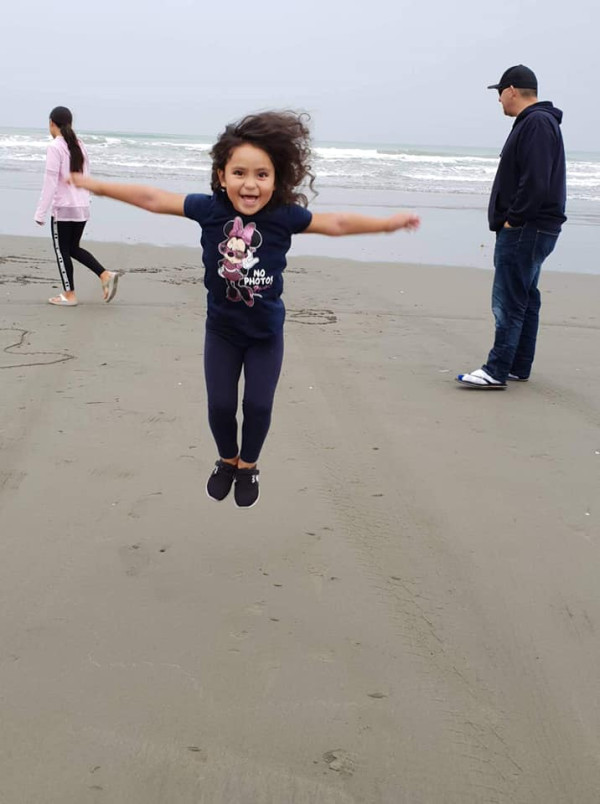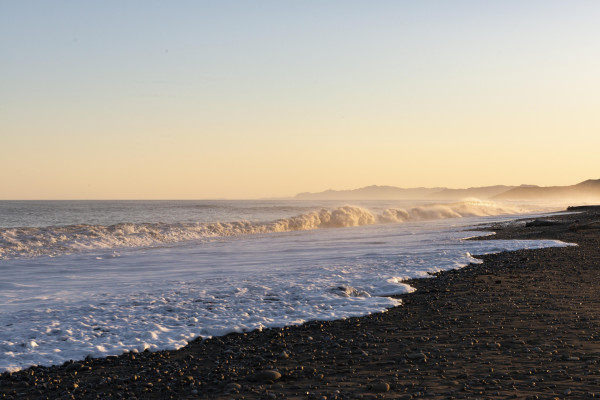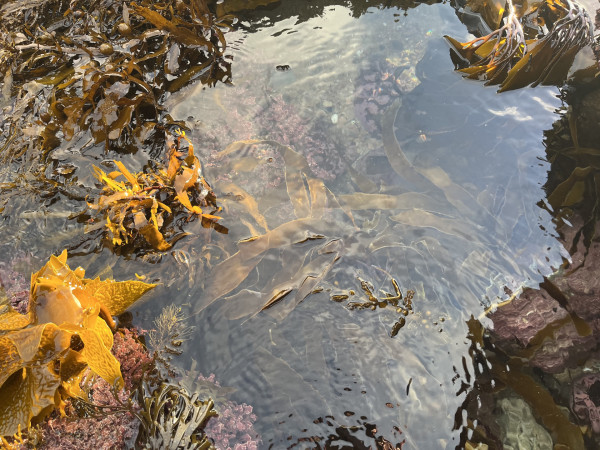Posted on 14 December 2022
Te Au o Te Moana – Voice of the Ocean: Dr Jason Mika
- News
- 14 Minutes to read
Jason Mika is co-lead for Indigenising the blue economy. His kaupapa encourages us all to build a closer relationship with the moana. Giving Aotearoa and the peoples of the Pacific a way to re-imagine our economy, identities and philosophy of life… (and he has an epic dad-sense-of-humour).
“If we think about our oceans as our ancestor, as a living, breathing ancestor, how are you going to treat your ancestor? Are you going to raid it and, deplete it and spoil it? No, you’re not. You’re going to look after your ancestor and cherish your ancestor because your ancestor is looking after you… It's a philosophy I think all could embrace and adopt just as much as the New Zealanders adopt the haka. Everyone, Pākehā, Māori, we all do the haka and it’s a Māori philosophy inside that haka. Same thing with the moana, adopt a Māori or Indigenous philosophy for the moana, because it’s going to be good for all of us, not just Māori. That’s the action I'd like to see.”
Published Dec 2022
Interview by Desna Whaanga-Schollum
...
Kia ora tatou,
Tuatahi, ka mihi atu ki tō tātou kaihana, i runga rawa, nāna nei i timata, nāna nei i tango ngā mea katoa. Nō reira, whakakororia ki tōna ingoa tapu i ngā wā katoa.
Ko wai ahau?
Ko Parekohe te maunga,
ko Ohinemataroa te awa,
ko Waikirikiri te marae,
ko Hamu te hapū
ko Tūhoe te iwi,
ko Mataatua te waka.
Ka rere atu ōku whakapapa ki a Ngāti Awa, ki Te Whakatohea, ki a Ngāti Kahungunu ki te Wairoa anō hoki, a ko Jason Mika ahau.
Kei Pāmutana, kei Papaioeia ahau e noho ana e mahi ana, ki Te Kunenga ki Pūrehuroa, ara ko Massey University tērā, i roto i te Kura Whaipakihi, arā ko Massey Business School.
Our research team aims to understand the business of fishing at an enterprise scale. We want to know how these enterprises draw on the Māori cultural principles of kaitiakitanga – ‘exercise of guardianship’ over people and land; whanaungatanga – forming and keeping connections in the community, as well as caring for the welfare of the members of the collective; manaakitanga – the underlying cultural practice of extending kindness and welcoming visitors; and rangatiratanga – right to exercise authority.
We are also examining the roles of the institutions which govern Māori fisheries—the Crown, government, and Māori institutions.
The Phase I project, ‘Whai Rawa, Whai Mana, Whai Oranga – creating a world-leading indigenous blue economy’, aimed to describe the Māori marine economy and how well it’s doing. That research involved case studies with six Māori organisations, iwi and pan-iwi, and also whānau-based enterprises, to understand how they approach the business of fishing in a particularly Māori way. That project informed our Phase II project, ‘Indigenising the blue economy in Aotearoa,’ which examines the barriers that prevent Māori from using their marine resources in a more culturally relevant, economically impactful, and environmentally sustainable manner. It’s part of the Challenge’s investigation of opportunities for marine activities that create economic value and contribute positively to ecological, cultural and social well-being in Aotearoa, New Zealand.
“The Māori marine economy is a view of the oceans and its economic activity, value, and impact that comes from a place of kinship and reciprocity. That’s the kind of relationship I would like to see us all have with our oceans.”
The question is, how do we support Māori who aspire to a blue economy that is underpinned by te Tiriti o Waitangi, Māori values, Māori aspirations, Māori institutions, and Māori capacities to engage in marine-based activity—economic and social and cultural—that supports their wellbeing? We look at this question at different scales: from whānau-based operations to the iwi and pan-iwi enterprises.

Kaimoana gatherers, Rangitukia. Photo credit: Dr Natalie Robertson
Can you share a memory or moment that you felt connected to the moana?
My earliest memories of the moana are going to collect pipi at Maketu with my kuia, my koro and my aunties. What I understood of the moana was the place where you get kai. Other people go there to swim and that, but for me, it was always a place where you got kai.
As I got older, I had other experiences, and one of them was with my dad. He had an 80-year-old ketch parked at West Haven marina under the Auckland Harbor bridge. A beautiful location, and if you go there, there are million-dollar yachts, and then there's my dad's ketch, barely afloat. He and I would visit the ketch. I was about 18 or 19 at the time, we’d crank over the motor, and have a bottle of stout, which I hated. I mean, I don't know what that stuff is. It's a liquid golden syrup kind of Marmite-flavoured beer! But anyway, that's what he loved.
One day, he says, why don't we take her out? That boat was called The Vagabond. It was a bit of a rough as boat. We took it out into the harbor, and I had no clue what I was doing sailing. We had no lights, no navigation equipment, no communications gear, and no kai, just stout. And so, we were sailing around the harbour, and it felt pretty good for a while.
Then we’re getting pretty close to Rangitoto, and I say, uh, we'd better turn around and go back. He says, oh no, no, we’ll just go a bit further. At this stage, it was getting dark, and he said oh I think we’re stuck here for the night, and I said, I think you’re right. So, we think, where are we going to park this thing… got no lights, no nothing, and ships are passing us. He said, Let’s get as close as we can to Rangitoto. I said - How are we going to know when we’re there? Dad said When you can hear the water breaking on the rocks, let me know, and we'll stop. So that’s exactly what I did. We spent the night on the boat. When I woke up, the rocks were right next to the boat, and I thought, oh my goodness, we could have been stranded there!

Jason Mika & tamariki. Photo credit: Jason Mika
What is the biggest challenge that you see in marine management?
There are two. There’s the biophysical challenge, which is how climate change affects the moana and its ability to sustain itself. Then there’s the human challenge. How do we manage our responsibilities in our relationship with Tangaroa?
Who gets to decide that is the critical question. Right now, we have enough excellent science and research to make judgment calls about the best approach to managing the health of Tangaroa. If we just pause and figure out the best approach to managing our relationship with Tangaroa, so Tangaroa is healthy, and we are healthy, well then, we’ve got that knowledge.
The issue is how we decide which approach is best and how that is implemented.
The current institutional setup is that the Crown decides what’s best. Local government will decide what’s best. Those institutions do not always consider their partnership responsibilities with Māori under Te Tiriti o Waitangi. As institutions, they tend to go with what everyone else thinks is the best thing for most people. This can lead to average solutions, or just above the average, rather than what is the best.
Having been a public servant and a policy analyst, what you see in that sort of position is that the government policy process works within a set of parameters defined by the Crown's and the government’s view of the world. Legislation and policy limits are well-defined within that framework. To step outside of that and say, well, there’s another way of seeing the world, especially if we're engaging with Māori enterprises and Māori people, we need to see the world from a different point of view. It’s tough to do that because the government gets a bit nervous when you say there’s a broader way of seeing the world than what the government says there is. So, when you try to develop any policy program that’s publicly funded that supports Māori, it’s questioned. Why Māori? Why are we supporting just Māori from these sorts of publicly funded initiatives? And how does this fit within the broader goals of the government?
How does the research help increase understanding across cultures?
The best solution may not be only a Pākehā solution. It may be a combination of Pākehā knowledge, Māori knowledge, and international knowledge about what’s best for our moana. Some institutions find it hard to accept that there are other knowledges and other solutions that may be better than the ones that represent the majority view.
Ecosystem-based management (EBM) is a central concept for the Sustainable Seas Challenge. It is a way of encouraging different stakeholders and institutions to think more broadly than the standard, conventional, or past approaches. To allow other voices to be heard and other knowledge to be part of the decision-making process.
We need to ensure that the EBM framework can sufficiently deal with power relationships—the imbalances between Māori and the Crown and how we work together in partnership to solve future challenges. The Challenge research program is looking at the role of the Treaty of Waitangi, jurisdictional issues, and management and governance issues. Hopefully, we will uncover alternative pathways and partnership-based approaches to EBM.

Rangitukia waves. Photo credit: Dr Natalie Robertson
What do you most want other people to understand about this research?
It’s the concept of manahau. Manahau encourages people in institutions, companies and firms to think about others before they think about themselves.
At the moment, when we’re thinking about our relationship with Tangaroa, we think about how does this affect me? Māori philosophy, a Māori way of thinking about how you enhance your personal well-being, is by enhancing the well-being of others first.
When thinking about other people, I’m acting in a way that is generous through my care and concern for others. In other words, if my focus is on enhancing the well-being of other people and other stakeholders, like Tangaroa, like ngā uri o Tangaroa, marine environments, then I'm going to enhance my well-being and my status and my mana. When you’re acting in a mana-enhancing way towards Tangaroa, towards the moana, you’re enhancing your own mana as a person, as a whānau, as a hapū, as an iwi, as a company, as a community.
That’s the call to action, to think about others.
“We've got to do more personally and individually, thinking about how we live and how we choose to live. Choosing what kind of system, or what kind of society we want to live in and making changes at that collective scale.”
A big objective is to protect the environment, to protect the whenua, the moana, to look after the people and their territories. Business becomes a means to achieving those objectives. It’s not the sole purpose, it’s not the only purpose that Māori pursue business though. A Māori approach to doing business has to find a way to make all those objectives economic and commercial. We have to do business in a way that achieves those broader set of objectives in a commercially viable manner.
In terms of the businesses that are approaching business in a Maori way, many are in the agribusiness and fisheries sectors, because of our whenua Māori, and what our treaty interests have been. An excellent example is Wakatu. What they're doing is quite amazing stuff in terms of their relationship to their people, to their whenua, and to their moana—incorporating Māori values of stewardship of guardianship, custodianship, and resources for future generations. Also, having quite an intimate understanding of consumers and what their preferences are and allowing them to become familiar with the Māori story as well and Māori products. They have also got a big focus on innovation. How do we move beyond growing kai and sharing their kai with the world to figure out what are the new processes, the new technologies, and the new products that we could introduce using a combination of mātauranga Māori and mātauranga te ao whanui (global knowledge).
In the marine space, one that I like is AgriSea. AgriSea harvests rimurimu (seaweed) and turns it into products and nutrients for the whenua. They’re undergoing a lot of research to figure out what other kinds of biological resources sit within the seaweed that they're gathering, that they could be producing products with. That’s a Māori enterprise that is using taonga species, using our mātauranga Māori, using mātauranga Pākehā, using science and innovation to create a sustainable enterprise.

Rimurimu, (Seaweed), Tamatea, 2022. Photo credit: DWS
To you, what about the moana is worth protecting?
Everything. Because if you think about life on Earth and human well-being and the well-being of Papatūānuku it all comes down to the water.
Te oranga o te tangata me te whenua, nō te wai. Nō te wai tērā. If we don't take care of the water, the water will not be there to take care of us.
When you think about what we do to look after our whānau, our primary function is to feed our whānau. How do you feed your whānau? Ask Tangaroa to allow us to take some of our whanaunga from the moana to feed our whānau and provide them with sustenance.
When we take something from Tangaroa, we must think about what to give back in return, to replenish what was taken. Thinking about not only what we take but what we give, this comes from some awesome work that John Reid, Matt Rout and others are doing around the concept of reciprocity.
Kaimoana is not just about kai from the moana, but it's also about how we give back. So that there is kai for our mokopuna and their mokopuna and so on. It’s not just a daily exercise feeding the whānau. It’s actually a long-term obligation and activity that we are engaging in daily.
We need to change our daily awareness and re-design the systems we operate within.
This is manahau.
View the entire audiogram playlist
Read more in this story series
Learn more about the systems-change work Jason and his colleagues are contributing to here: